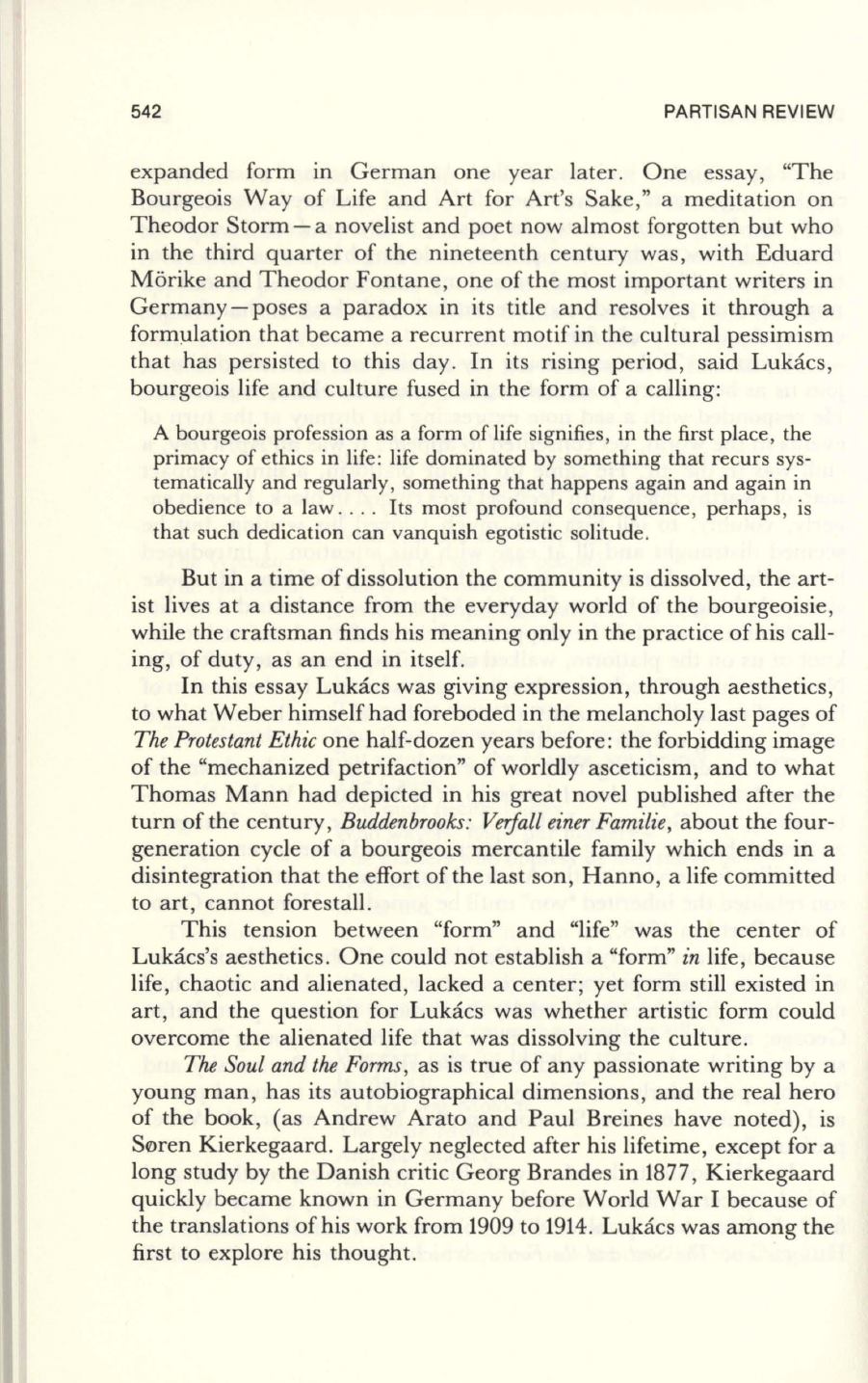
542
PARTISAN REVIEW
expanded form in German one year later. One essay, "The
Bourgeois Way of Life and Art for Art's Sake," a meditation on
Theodor Storm - a novelist and poet now almost forgotten but who
in the third quarter of the nineteenth century was, with Eduard
Morike and Theodor Fontane, one of the most important writers in
Germany-poses a paradox in its title and resolves it through a
formulation that became a recurrent motif in the cultural pessimism
that has persisted to this day. In its rising period, said Lukacs,
bourgeois life and culture fused in the form of a calling:
A bourgeois profession as a form of life signifies, in the first place, the
primacy of ethics in life: life dominated by something that recurs sys–
tematically and regularly, something that happens again and again in
obedience to a law . ... Its most profound consequence, perhaps, is
that such dedication can vanquish egotistic solitude.
But in a time of dissolution the community is dissolved, the art–
ist lives at a distance from the everyday world of the bourgeoisie,
while the craftsman finds his meaning only in the practice of his call–
ing, of duty, as an end in itself.
In this essay Lukacs was giving expression, through aesthetics,
to what Weber himself had foreboded in the melancholy last pages of
The Protestant Ethic
one half-dozen years before: the forbidding image
of the "mechanized petrifaction" of worldly asceticism, and to what
Thomas Mann had depicted in his great novel published after the
turn of the century,
Buddenbrooks: Verfall einer Familie,
about the four–
generation cycle of a bourgeois mercantile family which ends in a
disintegration that the effort of the last son, Hanno, a life committed
to art, cannot forestall.
This tension between "form" and "life" was the center of
Lukacs's aesthetics. One could not establish a "form"
in
life, because
life, chaotic and alienated, lacked a center; yet form still existed in
art, and the question for Lukacs was whether artistic form could
overcome the alienated life that was dissolving the culture.
The Soul and the Forms,
as is true of any passionate writing by a
young man, has its autobiographical dimensions, and the real hero
of the book, (as Andrew Arato and Paul Breines have noted), is
S~ren
Kierkegaard. Largely neglected after his lifetime, except for a
long study by the Danish critic Georg Brandes in 1877, Kierkegaard
quickly became known in Germany before World War I because of
the translations of his work from 1909 to 1914. Lukacs was among the
first to explore his thought.


